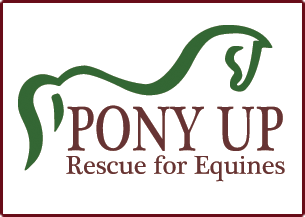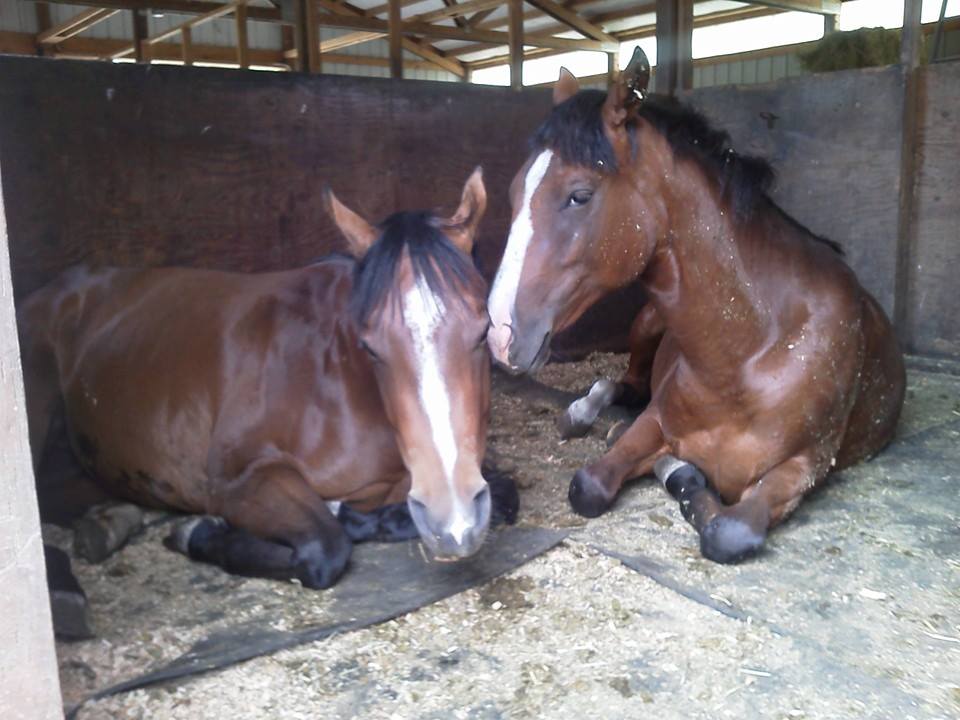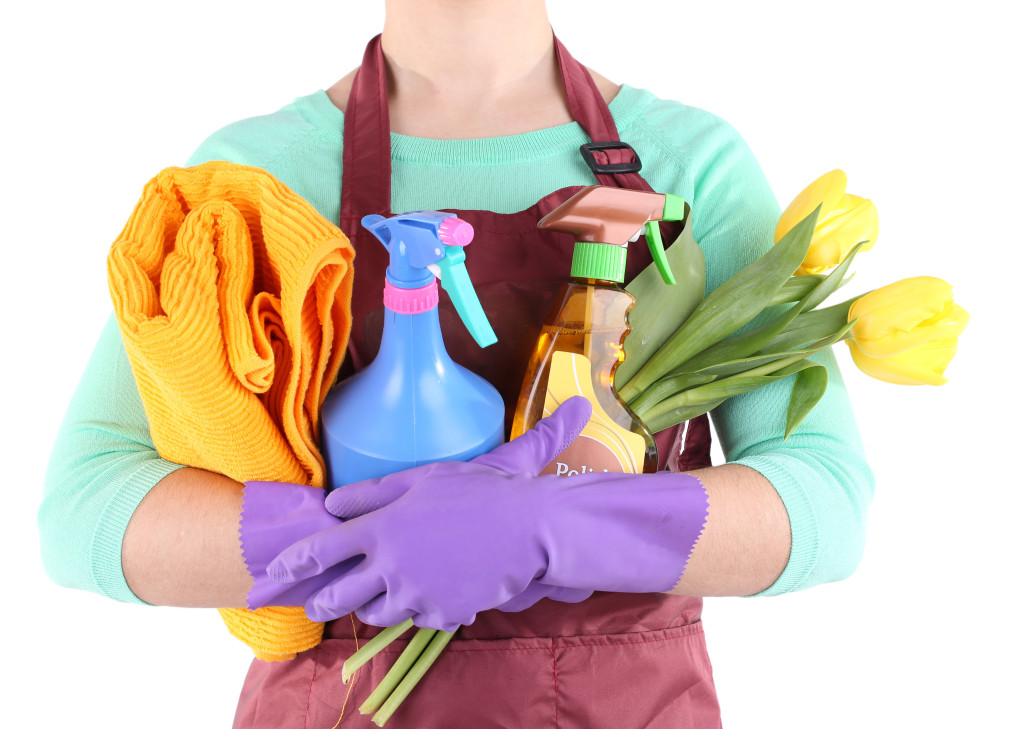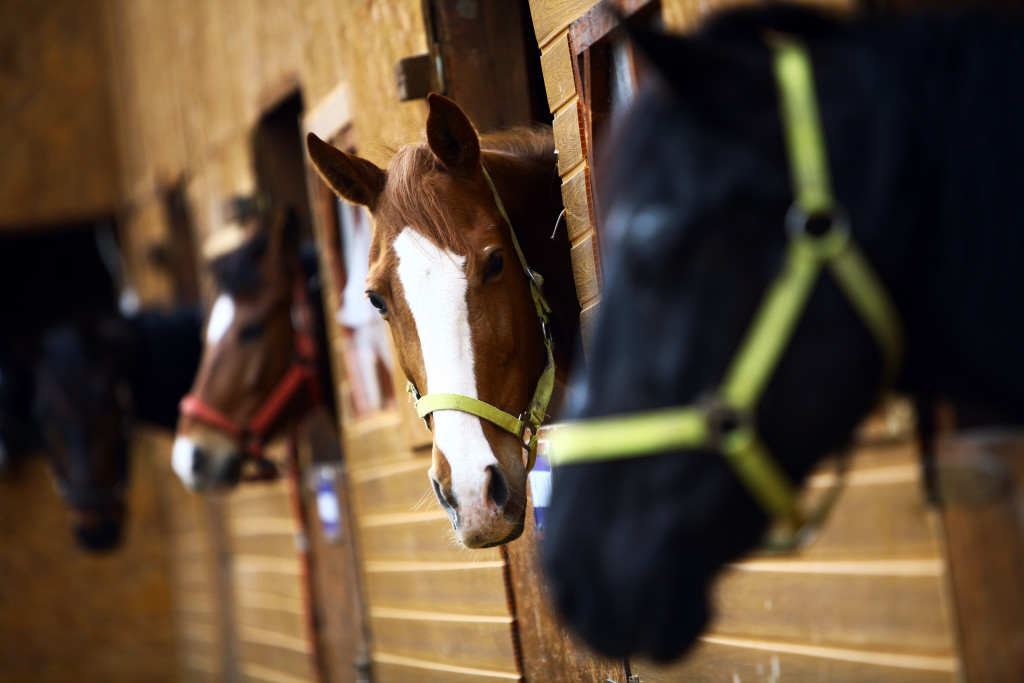Pony Up Rescue in Olalla, Washington
Spring is here, and with it comes the babies! What a joy to anticipate the arrival of a foal, all of the planning and preparation, perusing magazines and advertisements for the perfect hot date for your precious mare. And then there is the 11-month wait. The sleepless nights on foal watch. The false alarms. The impossible mare who you swear is going to set a world record for carrying her foal the longest. All of these wonderful hopes and dreams you have for that amazing baby, the sacrifices you make in your life to afford to make them happen. It is a truly amazing event.
So it is always shocking to me that so many of these precious, amazing, unique little lives grow up to find themselves alone. At every age. Of every breed. In every color. Left at an auction house. Surrendered. Abandoned. Starved. Neglected. Unwanted and without hope. Used up. Cast out.
That there are people out there wh0 dedicate their lives to rescue these horses is what gives me hope. And believe me, there are angels everywhere. At Grand Meadows, we try to do what we can when we are able to support our nation’s horse rescues, and we want to feature some of them on our blogs. I will regularly be highlighting the efforts of equine rescue groups and individuals we are lucky enough to know, and hope that you will find it in your heart to share in their efforts. To help save these unfortunate equine souls. To help educate the need to promote responsible horse breeding and the lifelong commitment we owe to these horses.
Introducing Pony Up
Recently I was able to talk with Rosemary Collins, founder of Pony Up, a non-profit 501c3 she formed in 2009 in Olalla, Washington. Although she had been rescuing horses privately for most of her life, she wanted to grow and be able to accommodate more horses. She currently cares for 15 of them.

“Our mission is to rescue, rehabilitate, retrain and rehome,” Rosemary said. “It is not enough to just ‘rescue’ them, we intend to give them training so that they can have a useful and productive life. Too many horses remain untrained or unhandled at an older age and it is death sentence when they become unwanted. When they do take in an older horse that is not a candidate to be ridden or rehomed they seek foster or companion homes that will care for the horse for their remaining golden years.”
It takes a village to do what she is doing, so I asked her how she gets funding and support, and manages the day in, day out of running a horse rescue.
“We keep an active Facebook page so that our audience knows what we do and how we do it,” Rosemary said. “We work with our local running start program, which involves high school seniors, and part of the curriculum is community service. We also advertise in local media – magazines, Volunteer Match, and Craigslist. We have an annual auction dinner each fall that helps us raise funds to keep horses fed and maintained through winter and spring. In the summer time we have wine tasting evenings, tack sales, pony shows and fill the trailer days at our local feed store.”
Rosemary is very grateful to the many people who donate not only funding, but also their time and love to each and every one of these horses.
“Our volunteers are the backbone of our operation,” she said. “We are proud to have a seriously dedicated team of individuals who love these horses, and we are proud of what we have accomplished in a few short years. We have taken an abandoned farm and made it into a working horse farm. Every horse has a stall, a run, and a pasture to graze on. They are our horses until they are your horses; that is our motto!”
A Typical Rescue Story
“We had been alerted to a Thoroughbred in need and decided to go and get him,” Rosemary explained. “We made arrangements to pick him up on an early Sunday morning. The woman at the place pointed him out. She told us, ‘He’s trouble, he’s dangerous and he should ship,’ – as in ship to slaughter. He was standing in a small muddy pen with several other horses. A dirty, depressed shell of a horse. He was a tall bay horse; I could not see his legs for the mud that covered them. We had been told he was 12-ish.
“As I approached, he did not look towards me, but stood with his head down, eyes half-closed, and I thought he could be in pain. There was no spirit in him and I wondered if perhaps he was really old and really used up. I spoke to him softly and in that moment he turned away slightly. He had given up on people. I came closer and saw jutting hip bones, matted fur and splayed feet. I swallowed hard and stepped closer. When I reached out to put my hand on him, he winced and I realized he expected me to perhaps hit him. His eyes were wide open now and he stumbled a few steps in the slippery mud to get away.
“I reached for a peppermint in my pocket and rustled the wrapper. He brought his head around to face me and for a brief moment I saw hope in his eye as his ears came forward. In this hell hole, could someone really have brought him a treat? I spoke again and encouraged him to come to my hand. He stepped forward. He reached for the treat, and as he took it, I scratched his forehead. He melted onto my side, sunk his head under my arm and just stood motionless. He was filthy, he smelled, his mane was tangled, but I saw potential. I saw a desperate living being aware of his fate.
“We flipped his lip back and saw he was only seven by the tattoo left there. A life gone from good to bad, and how many homes in between? A life once so full of promise and now so full of gloom. From riches to rags, I guess. I wish I could say it shocked me. It doesn’t shock me any longer, it always punches me in the heart. The ones left behind, the ones thrown away.
“There was no way he was not going home with us. He loaded right up, of course he did, they always do because they know. They know they are going home.”
Help These Horses Go Home
You can make an impact on these horses in need. To learn more about Pony Up Equine Rescue, please visit their website at PonyUpRescue.com or visit them on Facebook at Facebook.com/PonyUpRescue.





 Biotin is a B-Vitamin, and has been shown to improve poor, weak, and thin-walled hooves when fed for three to six months. Biotin stimulates keratin production in the hoof’s laminae and coronary band, which can help strengthen and improve the periople, hoof wall, sole, frog and white line, minimize weak walls and cracks, and protect the exterior hoof wall from moisture damage.
Biotin is a B-Vitamin, and has been shown to improve poor, weak, and thin-walled hooves when fed for three to six months. Biotin stimulates keratin production in the hoof’s laminae and coronary band, which can help strengthen and improve the periople, hoof wall, sole, frog and white line, minimize weak walls and cracks, and protect the exterior hoof wall from moisture damage.
